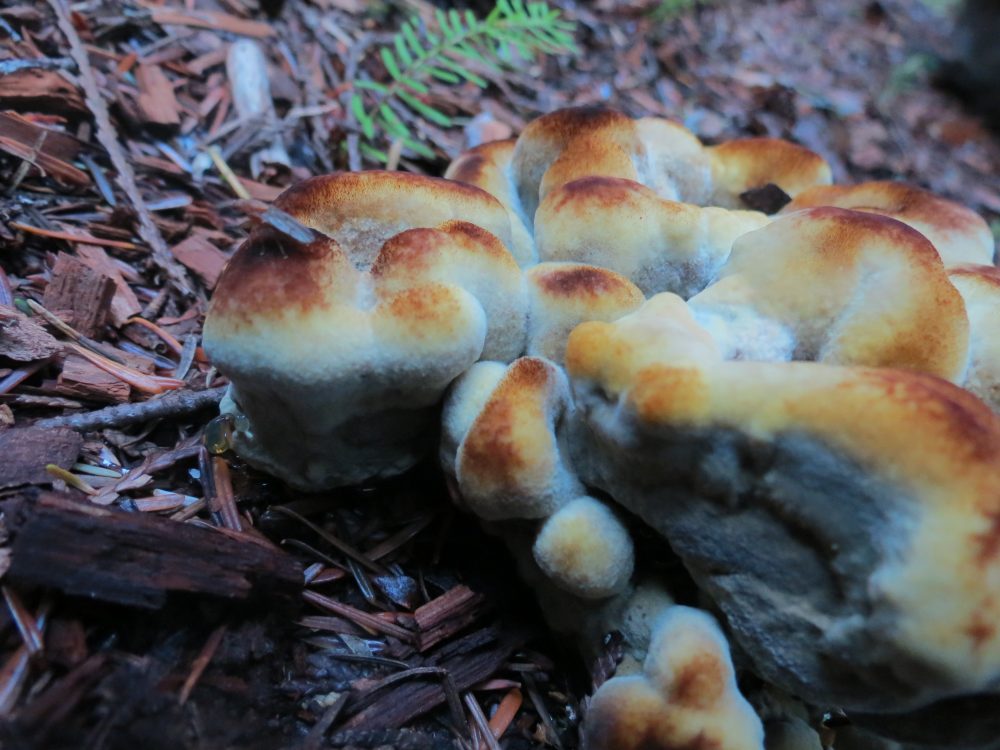
Walking in the Salmon River Estuary on Vancouver Island, l noticed a more than average amount of the Phaeolus Schweinitzii Mushroom, they are also called dyers polypore because they make excellent dyes. These are your classic butt rot fungus, they attack trees through their roots. This fungus causes the roots, butt, and about the first 3 to 6 meters of the heartwood to decay. This weakens the root system severely and quite will often cause the tree to blow over during the winter storms. Trees that stay standing are downgraded to less valuable lumber when logged.
The Salmon River estuary is predominately spruce and the spruce here are almost completely covered in burls. I am quite curious if these fungi can be a cause of burls forming on spruce trees. If you have any knowledge of this, please write to me about it.

Phaeolus schweinitzii mushroom will mostly attack conifers and is usually found scattered near the base of the tree. It has a velvety, brown to olive cap when young, along with a yellowish-orange pore surface that bruises brown. The pores are angular and fairly large, and the fairly thin, flexible flesh is brown to reddish-brown. With age, the mushroom becomes all brown with a green hue to the pore surface. Older Phaeolus schweinitzii like the ones in the photos are no longer velvety and lack any of the colors they have when young.
Trees infected usually do not show outward symptoms, so the presence of these fungi is usually not realized until a tree breaks or is knocked over by the wind due to a loss in root support. The fruiting bodies often emerge through the soil from decayed roots giving an indication of their presence. On old stumps, they can sometimes be quite prolific.

This fungus is used to make dyes, depending on the mordant used, you can create dyes of green, yellow, gold, or brown. These dyes are very vibrant and long-lasting. A mordant is a mineral such as Alum, Iron, copper, etc. A fixative such as salt or tannins should also be used.